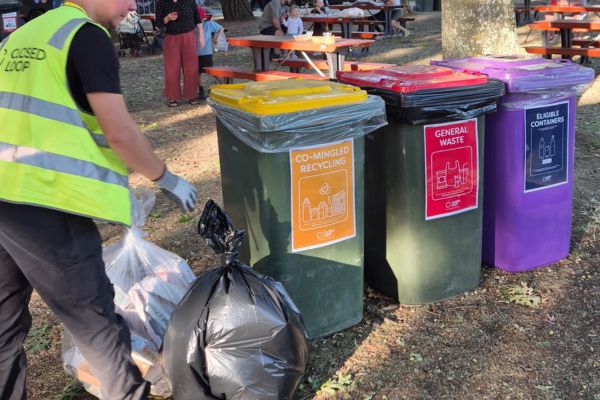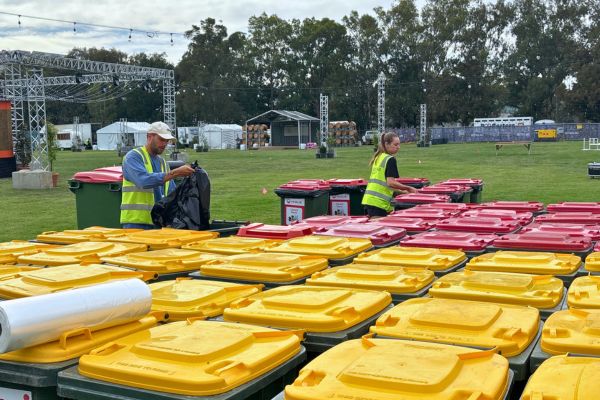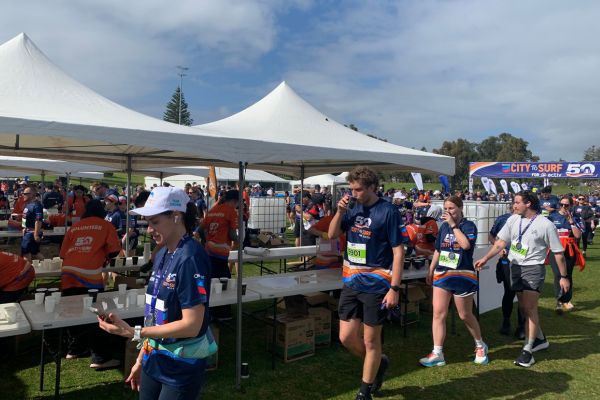Measure and manage your venue’s food waste
Food waste has significant impacts to businesses such as costs and environmental impact and whether you are aiming to contribute to a sustainable future or preparing for upcoming food waste regulations, adopting a structured approach to measuring and reducing food waste can benefit your business.
Knowing your impact
Why measure food waste?
Measuring food waste is the first step in identifying where your business can make meaningful changes. Without proper tracking, waste is often invisible—a “leak” that you can’t see, let alone fix. By regularly measuring and recording food waste, you’ll gain insight into where waste is occurring, spot patterns, and implement strategies to reduce unnecessary waste.
This approach will not only save you money on purchasing, waste disposal, and operating costs but also reduce the environmental burden of food waste, which contributes to methane emissions—a greenhouse gas 85 times more potent than carbon dioxide over 20 year1.
Conduct an audit
Why measure food waste?
The simplest and most effective way to measure food waste is by measuring it either by weight or by volume. We recommend tracking your business’ food waste daily for at least one week to get an accurate picture of how much waste is generated. After the initial audit, repeat the process either every six months or seasonally, depending on your business operations. You may need to adjust the way this is measured depending on feasibility and scale as well.
Here’s how to approach it:
-
- Set up a waste-tracking station where staff can discard food waste in separate bins.
- Use four separate bins or buckets. If you are recording this by volume, make sure you know the size of the containers.
- Inedible waste: Non-consumable parts of food such as coffee grounds, seeds, peels, and bones.
- Spoilage: Food that has become unsafe to eat, either due to damage or expiration.
- Preparation waste: Offcuts and scraps produced during food prep.
- Plate waste: Leftovers that customers didn’t consume.
- Engage staff by notifying and educating them on the importance of reducing food waste. Encourage participation and excitement around the new practice.
- Nominate staff members to measure and record the weight or volume of each type of waste at the end of each day.
For a detailed food waste audit form, you can use this template from Queensland Government2.
Create an action plan
Start tackling your food waste
Once you have your audit results, you can begin addressing the different types of waste. Here are some recommendations for each category:
1. Inedible waste:
- Organise an organics waste collection service to save this material from landfill.
- Consider onsite food waste management like a commercial composter.
- If there’s minimal inedible waste, you could also explore community compost hubs for donation.
2. Spoilage:
- Improve storage practices to extend the shelf life of food and reduce spoilage.
- Declutter and reorganise your storage spaces.
- Implement FIFO (First In, First Out) practices for managing food stock.
- Label food upon delivery and store items at the right temperature.
- Keep storage areas clean and dry and check the temperature of your fridge and freezer regularly. Avoid overloading your fridge or freezer.
- Use airtight containers and vacuum-seal prepared food to preserve freshness.
- Changing the way you order food can also reduce food wastage:
- Check your stock regularly and only buy what you need.
- Order smaller quantities more frequently.
- Support local and buy seasonally to get fresher produce.
- Offer special chef or lunch menus to use up excess ingredients.
3. Preparation waste:
- Review your menu to minimise waste from prep:
- Repurpose food scraps in other dishes such as soups or sauces.
- Embrace whole-ingredient cooking (‘nose to tail’ or ‘root to stalk’ cooking).
- Remove or adjust menu items with high waste.
4. Plate waste:
- Work with staff to identify common plate waste and determine if portion size or the menu item needs to be adjusted. Asking for customer feedback can also help you identify why there is plate waste.
- Offer customers the option of smaller portions or different serving sizes.
- Encourage take-home options.
Other alternatives
Donate or recycle food waste
If food waste still remains after the above measures, you may be able to share on online platforms:
- Too Good To Go is a marketplace for surplus food, connecting consumers with rescued food.
You can also consider donating edible food to local charities. Many organisations accept food donations that would otherwise be discarded, as long as it’s safe to eat. Some charities that accept food waste are:
For food that’s no longer safe for consumption, look into on-site composting or food waste recycling services. Closed Loop offers a range of on-site commercial composters at various sizes to suit your business needs. You can also find a food waste collection service provider or contact your current waste collection provider and local council for more information.
Notice the change
Celebrate progress
Tracking and reducing food waste isn’t just about cutting costs—it’s also about contributing to a more sustainable future. As you implement your food waste action plan, take time to celebrate the progress you’ve made. Whether it’s a reduction in waste weight, a decrease in disposal fees, or a successful donation program, recognising these milestones will motivate your team and show your commitment to sustainability.
In the long run, the benefits of reducing food waste extend beyond the balance sheet. It’s a step towards operating a more resource-efficient business, protecting the environment, and being part of the growing movement toward a waste-free future.
References:
- https://www.climatecouncil.org.au/resources/australias-methane-challenge-fossil-fuels-agriculture-waste/
- https://www.qld.gov.au/environment/circular-economy-waste-reduction/reduction/reduce-food-waste/at-your-business/








